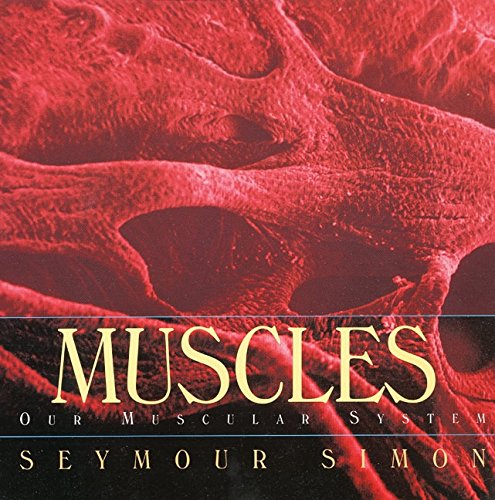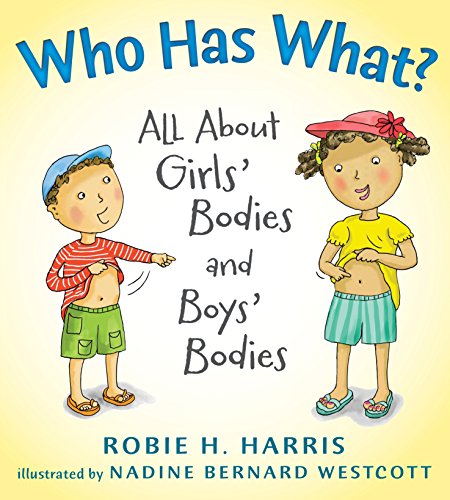On this page: General Resources | Senses | Circulatory | Digestive | Endocrine | Immune | Musculoskeletal | Nervous | Renal | Respiratory | Reproductive | Skin | Experiments
general resources
📖 Magic School Bus Inside the Human Body by Joanna Cole & Bruce Degen. Ms. Frizzle's class takes a tour of the inside of a body. Along the way, the students learn first-hand about digestion, circulation, respiration, and the nervous system. – Elementary
📖 Human Body Theater: A Non-Fiction Revue by Maris Wicks. This terrific 200+-page comic book guide to the human body conveys a remarkable amount of information in a humorous and easily digestible format. Have a blast while learning everything you need to know about the body. Highly recommended. – Elementary • Middle
📖 The Way We Work: Getting to Know the Amazing Human Body by David Macaulay. From the author of The Way Things Work, here is a wonderful tome on the human body, filled with detailed cartoonish illustrations. Topics include: organic molecules, cells and cellular processes, respiration, circulation, digestion, the nervous system, movement, and reproduction. – Middle • High
▶️ What are you? from Kurzgesagt. “What Are You? Are you your body? And if so, how exactly does this work? Let’s explore lots of confusing questions.” – All
the senses
📖 My Five Senses by Aliki. This Level 1 Let’s-Read-and-Find-Out book gives a very first introduction to the five senses. Best for the very young. – Preschool • Elementary
📖 Magic School Bus Explores the Senses by Joanna Cole & Bruce Degen. The students in Ms. Frizzle’s class learn all about the five senses when they visit the insides of an ear, eye, nose, mouth, and brain. – Elementary
📖 Eyes and Ears by Seymour Simon. This beautifully photographed book in Seymour Simon’s body series gives a nice scientific introduction to the structure and function of the eyes and ears. – Elementary • Middle
circulatory system
📖 A Drop of Blood by Paul Showers. “Without blood, you couldn't play, or grow, or learn. That's because just about every part of your body needs blood, from your muscles to your bones to your brain. How does your body use blood?” This Let’s-Read-and-Find-Out book offers a nice introduction to blood. – Preschool • Elementary
📖 Hear Your Heart by Paul Showers. Learn the basics of how the heart works in this Stage 2 Let’s-Read-and-Find-Out book. There are a few experiments to accompany the text – Preschool • Elementary
📖 The Heart: All About Our Circulatory System and More! by Seymour Simon. In his Human Body series, Simon takes the reader on an informative, highly visual tour of the body systems with beautiful photographs and helpful illustrations. This entry delves into the circulatory system. – Elementary • Middle
▶️ Why do blood types matter? from TED-Ed. "Natalie S. Hodge defines the four major blood types and sheds light on why some bloods can mix while others cannot." – Middle • High
digestive system
📖 What Happens to a Hamburger? by Paul Showers. Get a broad overview of the digestive system in this simple Level 2 Let’s-Read-and-Find Out title. Great for early elementary. – Preschool • Elementary
📖 Guts: All About Our Digestive System by Seymour Simon. “Ever wonder how food like pizza or spaghetti moves through our body? It all happens in our digestive system, otherwise known as our guts. Working twenty-four hours a day, it makes sure the food we eat turns into energy, nutrients, and waste.” Here’s a nice visual tour of the digestive system. – Elementary • Middle
▶️ How your digestive system works from TED-Ed. “Constantly churning inside of you, the digestive system performs a daily marvel: it transforms your food into the vital nutrients that sustain your body and ensure your survival. Emma Bryce traces food’s nine-meter-long, 40-hour journey through the remarkable digestive tract.” – All
▶️ What does the liver do? from TED-Ed. "There’s a factory inside you that weighs about 1.4 kilograms and runs for 24 hours a day. It’s your liver: the heaviest organ in your body, which simultaneously acts as a storehouse, a manufacturing hub, and a processing plant." – Middle • High
endocrine system
▶️ What does your pancreas do? from TED-Ed. "Emma Bryce explains how the pancreas controls your sugar levels and produces a special juice that releases the nutrients from your food to help keep you in the best possible shape." – Middle • High
▶️ How does the thyroid manage your metabolism? from TED-Ed. "Emma Bryce explains how the thyroid, like the operations manager in a company, is tasked with making sure that all the cells in your body are working properly." – Middle • High
▶️ How do your hormones work? from TED-Ed. “Over our lifetimes, our bodies undergo a series of extraordinary metamorphoses: we grow, experience puberty, and many of us reproduce. Behind the scenes, the endocrine system works constantly to orchestrate these changes. Emma Bryce explains how this system regulates everything from your sleep to the rhythm of your beating heart, exerting its influence over each and every one of your cells.” – Middle • High
immune system
📖 Germs Make Me Sick by Melvin Berger. Learn about germs and how our bodies work to fight illness in this Level 2 Let’s-Read-and-Find-Out title. – Preschool • Elementary
📖 Germ Zappers by Fran Balkwill and Mic Rolph. This entry in the Enjoy Your Cells series gives a nice overview of the immune system. – Elementary • Middle
🔗 Content Connection: Microbes. Learn more about microorganisms and infectious diseases.
▶️ How mucus keeps us healthy from TED-Ed. "Your body produces more than a liter of mucus every day, and when you’re sick, it can be hard to miss. But what exactly is mucus? And what does it do, besides making you miserable?" – All
▶️ How does your immune system work? from TED-Ed. “Inside you, a daily battle is being waged and your immune system is at the frontline. Most of the time, you may not even notice it's there, but over the course of your life your immune system will guard you against hundreds of potentially fatal threats. Emma Bryce explores the different components of this system and how, together, they do their vital work.” – Middle • High
▶️ The immune system explained – bacterial infection from Kurzgesagt. “Every second of your life you are under attack. Bacteria, viruses, spores and more living stuff wants to enter your body and use its resources for itself. The immune system is a powerful army of cells that sacrifices itself for your survival. Without it you would die in no time. This sounds simple but the reality is complex, beautiful and just awesome.” – All
▶️ Tiny bombs in your blood – the complement system from Kurzgesagt. “One of the most valuable players of our immune system is the complement system. An army of millions and trillions of tiny warriors, which work together in a complex and elegant dance to stop intruders in your body.” – Middle • High
musculo-skeletal system
📖 The Skeleton Inside You by Philip Balestrino. Here’s a good introduction to the skeletal system: “There are over 200 bones living and growing inside you that make up your skeleton. There are also ligaments and joints that hold your bones together, and cartilage in your bendable parts like your ears and your nose. Learn all about what a skeleton can do.” – Preschool • Elementary
📖 Bones: Our Skeletal System by Seymour Simon. “In Bones, youngsters will discover the amazing facts about the two hundred and six bones that make up their skeletons, ranging from the smallest, most intricate bones in their feet and hands to the largest, strongest bones in their legs. Blending spectacular full-color photographs and clear, concise text, BONES offers an intriguing look at human body.” Another good resource from Seymour Simon. – Elementary • Middle
📖 Muscles: Our Muscular System by Seymour Simon. Learn about the muscular system in this wonderfully illustrated entry in Seymour Simon’s human body series. – Elementary • Middle
▶️ How your muscular system works from TED-Ed. “Each time you take a step, 200 muscles work in unison to lift your foot, propel it forward, and set it down. It’s just one of the many thousands of tasks performed by the muscular system: this network of over 650 muscles covers the body and is the reason we can blink, smile, run, jump, and stand upright. So how does it work? Emma Bryce takes you into the body to find out.” – All
▶️ The surprising reason our muscles get tired from TED-Ed. “You're lifting weights. The first time feels easy, but each lift takes more and more effort until you can’t continue. Inside your arms, the muscles responsible for the lifting have become unable to contract. What’s going on? Christian Moro explains how exactly our muscles operate, and what causes them to become fatigued.” – Middle • High
▶️ What makes muscles grow? from TED-Ed. "Your muscles need your constant attention, because the way you treat them on a daily basis determines whether they will wither or grow." – All
▶️ How to grow a bone from TED-Ed. "Can you grow a human bone outside the human body? The answer may soon be yes." – Middle • High
nervous system
📖 The Brain: All About Our Nervous System and More! by Seymour Simon. Here’s Seymour Simon’s visual introduction to the nervous system. – Elementary • Middle
▶️ What is intelligence? Where does it begin? from Kurzgesagt. Humans are proud of a lot of things, from particle accelerators, to poetry to pokemon. All of them made possible because of something humans value extremely highly: intelligence. – Middle • High
▶️ How do nerves work? from TED-Ed. “At any moment, there is an electrical storm coursing through your body. Discover how chemical reactions create an electric current that drives our responses to everything from hot pans to a mother’s caress.” – All
▶️ What happens when you remove the hippocampus? from TED-Ed. “When Henry Molaison (now widely known as H.M.) cracked his skull in an accident, he began blacking out and having seizures. In an attempt to cure him, daredevil surgeon Dr. William Skoville removed H.M.'s hippocampus. Luckily, the seizures did go away — but so did his long-term memory! Sam Kean walks us through this astonishing medical case, detailing everything H.M. taught us about the brain and memory.” – Middle • High
renal system
▶️ How do your kidneys work? from TED-Ed. "Emma Bryce details how the incredible kidneys balance the amount of fluid in your body, detect waste in your blood, and know when to release the vitamins, minerals, and hormones you need to stay alive." – Middle • High
respiratory system
📖 Lungs: All About Our Respiratory System and More! by Seymour Simon. “Without your lungs and your entire respiratory system, the rest of your body wouldn't receive the oxygen you need to survive. To give your body the oxygen it needs, you breathe twenty times every minute. You breathe more than twenty thousand times each and every day. Acclaimed science writer Seymour Simon explores the important journey that air takes in and out of your lungs.” – Elementary • Middle
▶️ What do the lungs do? from TED-Ed. “When you breathe, you transport oxygen to the body’s cells to keep them working, while also clearing your system of the carbon dioxide that this work generates. How do we accomplish this crucial and complex task without even thinking about it? Emma Bryce takes us into the lungs to investigate how they help keep us alive.” – Middle • High
reproductive system
📖 Who Has What? All About Girls’ Bodies and Boys’ Bodies by Robie Harris. This very first introduction to boys’ and girls’ bodies is just right for preschool and early elementary. Harris, in trademark style, does a great job of presenting the information in a cheerful, matter-of-fact tone that helps parents and kids feel comfortable. – Preschool • Elementary
📖 Nine Months: Before a Baby is Born by Miranda Paul. In this picture book, Miranda Paul and Jason Chin provide a gentle yet informative first introduction to reproduction: “A soon-to-be big sister and her parents prepare for the arrival of a new baby in the family. Alternating panels depict what the family is experiencing in tandem with how the baby is growing, spanning everything from receiving the news about the new baby to the excitement of its arrival.” – Preschool • Elementary
📖 It's So Amazing and other books by Robie Harris. Harris has published three books on reproduction, each geared toward kids at different maturity levels. It's So Amazing targets elementary school kids, It's Not the Stork! is written for middle schoolers, and It's Perfectly Normal is best for older middle and high school students. The books are written in a reassuring, matter-of-fact tone. Of course, sex and sexuality is a delicate topic; these books may or may not work for your family. – All
skin
▶️ The science of skin from TED-Ed. “Between you and the rest of the world lies an interface that makes up 16% of your physical weight. This is your skin, the largest organ in your body: laid out flat, it would cover close to 1.7 square meters of ground. But besides keeping your organs in, what is its purpose? Emma Bryce takes us into the integumentary system to find out.” – Middle • High
experiments
🖐️ Experiment with the human body. The projects in Unit III of Janice Van Cleave’s Biology for Every Kid invite kids to explore their senses, lung capacity, heartbeat, fingerprints, and more. – Elementary
🖐️ Measure your lung capacity. How much air can your lungs hold? Find out for yourself with the “Lung Capacity” experiment in Crystal Chatterton’s Awesome Science Experiments for Kids. – Elementary

























